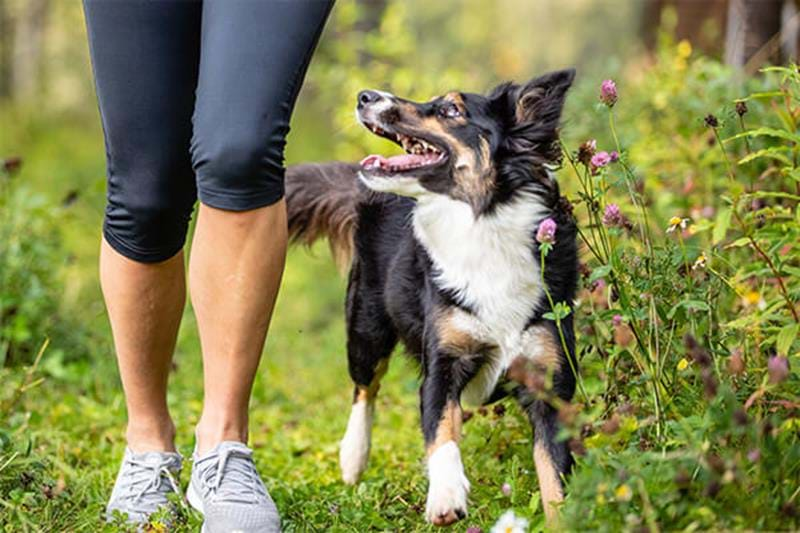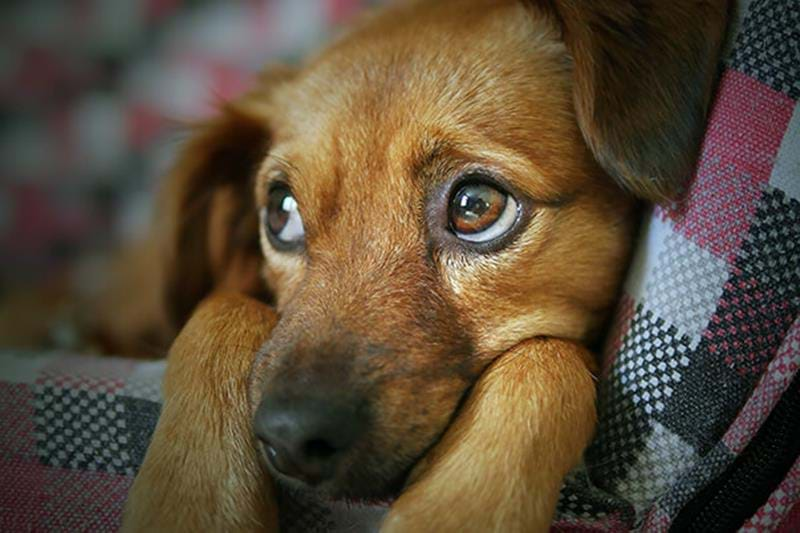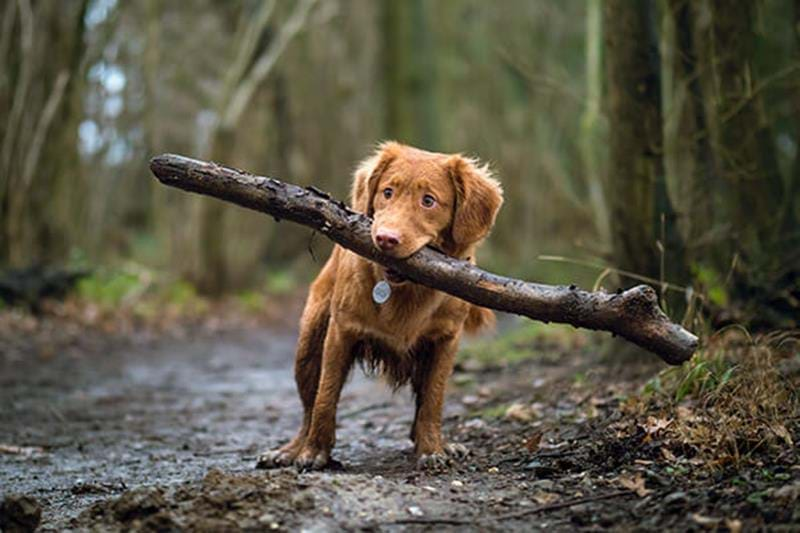When and how should you start environment training and socialising your puppy?
At an early age, puppies are extremely receptive to social stimuli, which makes it a perfect time for environmental training to help the puppy adapt to the world around it.
When you environment train your puppy, you lay the foundation for a calm and confident adult dog that can cope well with new surroundings and people. Bozita has put together a practical “checklist” of some common experiences that provide a puppy with good socialisation and environmental training.
PUPPY TRAINING – ENVIRONMENT TRAINING WITH THE BREEDER
Research shows that what the puppy experiences during the so-called socialisation period (the time when the puppy is most receptive to social stimuli)has a big impact on the rest of their life. The breeder has a responsibility to socialise the puppy and start the environment training correctly by letting the puppy be a part of everyday life and all that this entails. From 5–6 weeks of age, contact with humans should be gradually increased. Cuddling, play and handling are important elements for the puppy to socialise successfully, and should involve both the rest of the litter and one on one. Puppies that lack contact with humans often find it more difficult to deal with new situations and to train successfully. When the puppy moves to their new home at 8-9 weeks of age, it is time for the new owner to take over and continue the job of socialising and environment training the puppy from the breeder. Puppies are very receptive to learning between 8 and 12 weeks in age, with their experiences often forming lasting memories. It is also an important period from a social point of view. Key parts of a dog’s personality are laid during this time.
SOCIALISE YOUR PUPPY WITH AN ENVIRONMENT TRAINING PLAN
The work of environmentally training and socialising a puppy doesn’t have to be complicated If the dog is allowed to accompany their owner as much as possible then most training will follow naturally. But you can always put together an “environmental training plan”, a kind of checklist of what you should let your puppy experience. You do not have to follow it strictly and if you miss something, it’s never too late to train your dog later in life. A dog is receptive to guidance all of their life. It will just takes a little more time and patience and it can be difficult to un-learn behaviours that the dog has had for several years. Adapt the environmental training to you and your dog’s living situation. If you live in the country, focus first and foremost on getting used to things that you will encounter there, and vice versa if you live in the city.
CHECKLIST FOR SOCIALISATION AND ENVIRONMENT TRAINING OF PUPPIES AND DOGS
The following are 11 points that are good to have in the environment training plan for your dog. The more things you get your dog used to now, the easier it will be to deal with new phenomena for the rest of their life.
- Expose your dog to different sounds in the home Don’t tiptoe around at home so as not to disturb the puppy, let life go on as usual. Get the puppy used to TV, vacuum cleaners, lawn mowers, hair dryers, the phone, the doorbell, slamming pots and pans and everything else that makes a noise at home.
- Let your dog meet other people Your dog needs to be ok with spending time with and being handled by people other than you (patting, touching, lifting, poking in its mouth, looking in its ears and so on), especially when you visit the vet. There may also be situations when you have to rely on other people to take care of your dog, for example if you are ill or injured or have to travel for a longer period of time. The puppy also needs to become used to people who look different to you and move in different ways, for example people in wheelchairs, cyclists, roller bladers and so on.
- Get your dog used to children Children make more noise than adults and they move differently. If you don’t have children in your vicinity, walk past a school and let the children come and pet the puppy, a few at a time. Never leave small children alone with a dog!
- Dog meetups – let your dog encounter other dogs Your puppy needs to learn dog language and humans – for obvious reasons – are bad at teaching them this. The more friendly dogs – big and small – that a puppy meets, the more their confidence will grow whem encountering unknown dogs. Let the puppy play with an older dog if it is friendly. Lack of contact with other dogs after eight weeks has been shown to impair the development of dog communication. Dont wait until after the 12-week vaccination. The puppy has antibodies left from their vaccinated mother and there is only a small risk that the puppy will be infected if the older dog is also vaccinated. The benefits of socialisation are far greater than the risk of infection.
- Let your dog explore different surfaces Let them walk on grass, gravel, asphalt, snow, wooden floors, carpets, stone, sand, water and so on. Then different surfaces will get the puppy used to moving freely in different environments.
- Go on cars, buses, trains and boats with the dog The more means of transport you introduce your dog to, the more freedom of movement you have. Always start with short trips, around 5 minutes, and make sure something fun happens at the end, like a forest walk. Afterwards the puppy will associate riding a car / bus / train / boat with exciting adventures. Make the trips longer gradually. Remember that the dog must always be restrained in a harness or sit in a cage when you’re driving. It’s illegal to have your dog loose in the car in Sweden.
- Bring the dog to crowded placesBusy places often occur in everyday life no matter where you live and that means lots of sounds and smells for your dog. Most of what your dog sees is human legs. Let your dog experience, in small amounts, what a busy area is like. It’s a good idea to carry small dogs as they cane be trampled underfoot in crowds.
- Walk with your dog over bridges and through tunnels Walk with your dog over bridges and through tunnels to help your puppy become used to the traffic nearby. In tunnels, it is also dark and the sound is distorted in a strange ways.
- Accompany your dog into a lift and up the stairs Practise going up and down stairs, but not for too long. The stairs put a strain on your dog’s joints and muscles when they are not fully developed. Avoid escalators if you cannot carry your dog, as they can be frightening and dangerous. Your dog’s tail and paws might get caught. Practise going in the lift so it’s not an unfamiliar experience later in life.
- Introduce your dog to rural and urban areas Change their surroundings often! Take the dog to the country or town (depending on where you live) and introduce the puppy to things there, such as other animals, people shouting, large vehicles and machines, construction / road works and so on.
- Get the dog used to loud, sudden noises Getting the dog used to loud and sudden noises like thunder, gunshots and fireworks takes time and should be done gradually. There are special apps and CDs with different sounds that you can use. Start with very low volume and raise it as the dog becomes more confident.
ENVIRONMENT TRAINING SHOULD HAPPEN AT THE DOG’S PACE
The most important thing when you socialise and environment train your young dog is to maintain the right mood and to let all introductions take place in a calm and natural way. Give the puppy time to become used to new phenomena at a pace that works for them and make sure they always have a way out if it’s too much. Your dog should never feel pressurised or threatened. It’s better to take a step back and try again later. If the puppy is exposed to strong sensory impressions that frighten them during this period it might be shocked and affected for the rest of its life. As an owner, you should always try to behave calmly and in control during the environment training and socialisation of your puppy. When something unforeseen happens, dogs seek contact with their pack leader and if you appear upset, you will pass this on to your dog causing them to become more anxious. You should always be a calm and safe point in the dog’s life, so that they know there is no danger.







